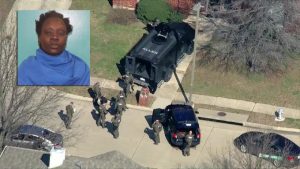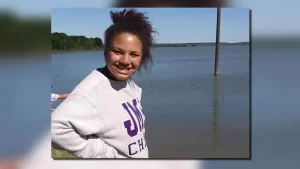Hurricane Laura strengthened into a powerful Category 4 storm in the Gulf of Mexico on Wednesday, prompting warnings of “unsurvivable” storm surge of up to 20 feet (six meters) and evacuation orders for hundreds of thousands of coastal residents of Louisiana and Texas.
The Miami-based National Hurricane Center said Laura was packing winds of 140 miles per hour (220 kilometers per hour) and was expected to make landfall along the Gulf Coast overnight.
As an “extremely dangerous” Category 4 hurricane — the second-highest on the Saffir-Simpson wind scale — Laura could pummel the Louisiana and Texas coast with storm surge, extreme winds and flash flooding, the NHC said.
An “unsurvivable storm surge with large and destructive waves will cause catastrophic damage from Sea Rim State Park, Texas, to Intracoastal City, Louisiana,” it said.
Storm surges could penetrate up to 30 miles inland along parts of the coasts, and peak surge coupled with high tide could see water as high as 15 to 20 feet above normal levels.
“The power of Hurricane Laura is unprecedented, and Texans must take action now to get out of harm’s way and protect themselves,” Texas Governor Greg Abbott said.
“The conditions of this storm are unsurvivable, and I urge southeast Texans to take advantage of these final few hours to evacuate.”
“Your property can be replaced,” Abbott said. “Your life cannot be replaced.”
President Donald Trump told residents in the path of the storm to “listen to local officials.”
“Hurricane Laura is a very dangerous and rapidly intensifying hurricane,” Trump tweeted. “My Administration remains fully engaged with state & local emergency managers.”
‘Not going to play with the good lord’
Jimmy Ray was among those heeding evacuation orders in Lake Charles, Louisiana.
“We were going to try to ride it out at the house, but we found out that it was going to be too bad,” Ray told AFP outside an evacuation facility.
Another evacuee in Lake Charles, Patricia Como, said her sister, her brother, cousins and other family members had stayed behind but she was “not going to take a chance.”
“I’m not going to play with the good lord,” Como said.
At 1800 GMT, Hurricane Laura was about 200 miles south-southeast of Lake Charles and moving north-west at 16 miles an hour, the NHC said.
It said the storm was expected to dump between five to 10 inches (13 to 26 cms) of rain on parts of the Gulf Coast between Wednesday and Friday.
Craig Brown, the acting mayor of Galveston, Texas, which suffered the deadliest hurricane in US history in 1900 with thousands of deaths, said the authorities were “monitoring this very closely.”
“We’ve had good cooperation from our residents on evacuation,” Brown said, adding that it was not mandatory.
“If they want to stay put, then we allow them to do that,” he said. “But we do tell them if they stay, they may not have any emergency services available to them.”
Angela Jouett, director of evacuation operations in Lake Charles, said the authorities had new protocols in place because of the Covid-19 pandemic.
“People that come in they get their hands sprayed with sanitizer,” Jouett said. “They’re having their temperature checks, and we’re also spacing everybody in six foot distancing.”
Struck Haiti, Dominican Republican
In New Orleans, devastated by Hurricane Katrina in 2005, the historic French Quarter was empty of tourists, while sandbags were piled up in front of the doorways of colonial-style buildings and windows were boarded up with plywood.
New Orleans remains traumatized from Katrina, which made landfall as a Category 3 storm, flooding 80 percent of the city and killing more than 1,800 people.
Laura earlier caused flooding in Haiti and the Dominican Republic, killing at least 25 people.
In Cuba, it caused material damage but no deaths.
The Atlantic storm season, which runs through November, could be one of the busiest ever this year, with the NHC predicting as many as 25 named storms. Laura is the 12th so far.






